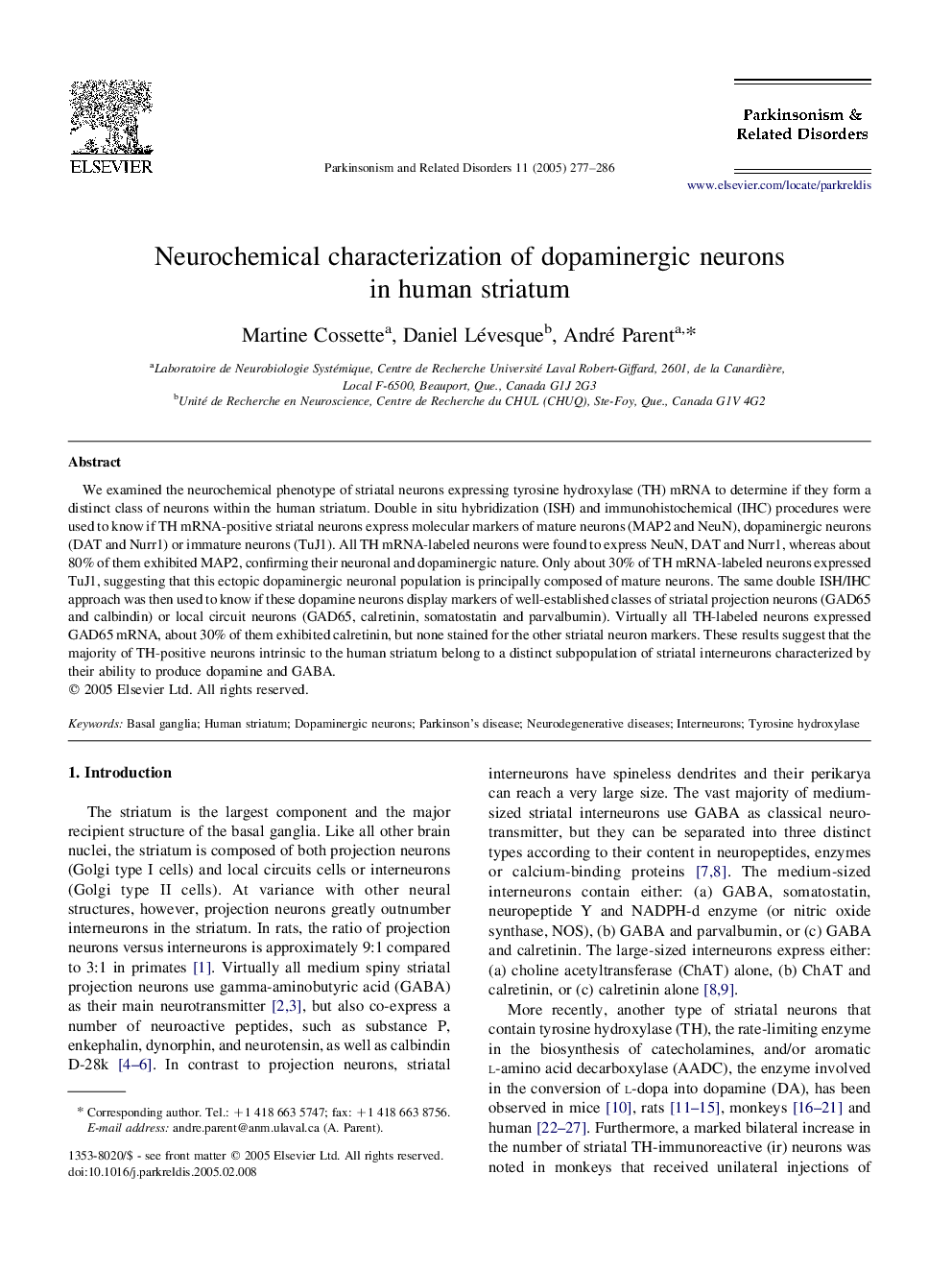| Article ID | Journal | Published Year | Pages | File Type |
|---|---|---|---|---|
| 10746895 | Parkinsonism & Related Disorders | 2005 | 10 Pages |
Abstract
We examined the neurochemical phenotype of striatal neurons expressing tyrosine hydroxylase (TH) mRNA to determine if they form a distinct class of neurons within the human striatum. Double in situ hybridization (ISH) and immunohistochemical (IHC) procedures were used to know if TH mRNA-positive striatal neurons express molecular markers of mature neurons (MAP2 and NeuN), dopaminergic neurons (DAT and Nurr1) or immature neurons (TuJ1). All TH mRNA-labeled neurons were found to express NeuN, DAT and Nurr1, whereas about 80% of them exhibited MAP2, confirming their neuronal and dopaminergic nature. Only about 30% of TH mRNA-labeled neurons expressed TuJ1, suggesting that this ectopic dopaminergic neuronal population is principally composed of mature neurons. The same double ISH/IHC approach was then used to know if these dopamine neurons display markers of well-established classes of striatal projection neurons (GAD65 and calbindin) or local circuit neurons (GAD65, calretinin, somatostatin and parvalbumin). Virtually all TH-labeled neurons expressed GAD65 mRNA, about 30% of them exhibited calretinin, but none stained for the other striatal neuron markers. These results suggest that the majority of TH-positive neurons intrinsic to the human striatum belong to a distinct subpopulation of striatal interneurons characterized by their ability to produce dopamine and GABA.
Keywords
Related Topics
Life Sciences
Biochemistry, Genetics and Molecular Biology
Ageing
Authors
Martine Cossette, Daniel Lévesque, André Parent,
